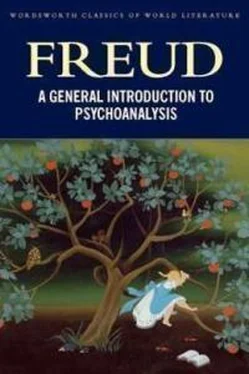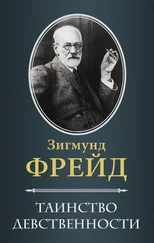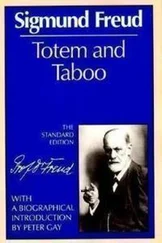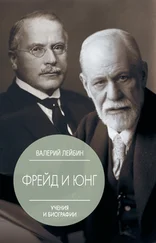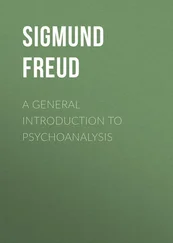The two forms of fear that have been described, free–floating fear and the fear which is bound up with phobias, are independent of one another. The one is by no means a higher development of the other; only in exceptional cases, almost by accident, do they occur simultaneously. The strongest condition of general anxiety need not manifest itself in phobias; and persons whose entire life is hemmed in by agoraphobia can be entirely free of pessimistic expectant fear. Some phobias, such as the fear of squares or of trains, are acquired only in later life, while others, the fear of darkness, storms and animals, exist from the very beginning. The former signify serious illness, the latter appear rather as peculiarities, moods. Yet whoever is burdened with fear of this second kind may be expected to harbor other and similar phobias. I must add that we group all these phobias under anxiety hysteria , and therefore regard it as a condition closely related to the well–known conversion hysteria.
The third form of neurotic fear confronts us with an enigma; we loose sight entirely of the connection between fear and threatening danger. This anxiety occurs in hysteria, for instance, as the accompaniment of hysteric symptoms, or under certain conditions of excitement, where we would expect an emotional manifestation, but least of all of fear, or without reference to any known circumstance, unintelligible to us and to the patient. Neither far nor near can we discover a danger or a cause which might have been exaggerated to such significance. Through these spontaneous attacks we learn that the complex which we call the condition of anxiety can be resolved into its components. The whole attack may be represented by a single intensively developed symptom, such as a trembling, dizziness, palpitation of the heart, or tightening of breath; the general undertone by which we usually recognize fear may be utterly lacking or vague. And yet these conditions, which we describe as "anxiety equivalents," are comparable to anxiety in all its clinical and etiological relations.
Two questions arise. Can we relate neurotic fear, in which danger plays so small a part or none at all, to real fear, which is always a reaction to danger? And what can we understand as the basis of neurotic fear? For the present we want to hold to our expectations: "Wherever there is fear, there must be a cause for it."
Clinical observation yields several suggestions for the comprehension of neurotic fear, the significance of which I shall discuss with you.
1. It is not difficult to determine that expectant fear or general anxiety is closely connected with certain processes in sexual life, let us say with certain types of libido. Utilization, the simplest and most instructive case of this kind, results when persons expose themselves to frustrated excitation, viz., if their sexual excitation does not meet with sufficient relief and is not brought to a satisfactory conclusion, in men, during the time of their engagement to marry, for instance, or in women whose husbands are not sufficiently potent or who, from caution, execute the sexual act in a shortened or mutilated form. Under these circumstances libidinous excitement disappears and anxiety takes its place, both in the form of expectant fear and in attacks and anxiety equivalents. The cautious interruption of the sexual act, when practiced as the customary sexual regime, so frequently causes the anxiety neurosis in men, and especially in women, that physicians are wise in such cases to examine primarily this etiology. On innumerable occasions we have learned that anxiety neurosis vanishes when the sexual misuse is abandoned.
So far as I know, the connection between sexual restraint and conditions of anxiety is no longer questioned even by physicians who have nothing to do with psychoanalysis. But I can well imagine that they do not desist from reversing the connection and saying that these persons have exhibited a tendency to anxiety from the outset and therefore practice reserve in sexual matters. The behavior of women whose sexual conduct is passive, viz., is determined by the treatment of the husband, contradicts this supposition. The more temperamental, that is, the more disposed toward sexual intercourse and capable of gratification is the woman, the more will she react to the impotence of the man, or to the coitus interruptus , by anxiety manifestations. In anaesthetic or only slightly libidinous women, such misuse will not carry such consequences.
Sexual abstinence, recommended so warmly by the physicians of to–day, has the same significance in the development of conditions of anxiety only when the libido, to which satisfactory relief is denied, is sufficiently strong and not for the most part accounted for by sublimation. The decision whether illness is to result always depends upon the quantitative factors. Even where character formation and not disease is concerned, we easily recognize that sexual constraint goes hand in hand with a certain anxiety, a certain caution, while fearlessness and bold daring arise from free gratification of sexual desires. However much these relations are altered by various influences of civilization, for the average human being it is true that anxiety and sexual constraint belong together.
I have by no means mentioned all the observations that speak for the genetic relation of the libido to fear. The influence on the development of neurotic fear of certain phases of life, such as puberty and the period of menopause, when the production of libido is materially heightened, belongs here too. In some conditions of excitement we may observe the mixture of anxiety and libido and the final substitution of anxiety for libido. These facts give us a twofold impression, first that we are concerned with an accumulation of libido, which is diverted from its normal channel, second that we are working with somatic processes. Just how anxiety originates from the libido we do not know; we can only ascertain that the libido is in abeyance, and that we observe anxiety in its place.
2. We glean a second hint from the analysis of the psychoneuroses, especially of hysteria. We have heard that in addition to the symptoms, fear frequently accompanies this condition; this, however, is free floating fear, which is manifested either as an attack or becomes a permanent condition. The patients cannot tell what they are afraid of and connect their fear, through an unmistakable secondary elaboration, with phobias nearest at hand; death, insanity, paralysis. When we analyze the situation which gave rise to the anxiety or to symptoms accompanied by it, we can generally tell which normal psychologic process has been omitted and has been replaced by the phenomenon of fear. Let me express it differently: we reconstruct the unconscious process as though it had not experienced suppression and had continued its way into consciousness uninterruptedly. Under these conditions as well this process would have been accompanied by an emotion, and we now learn with surprise that when suppression has occurred the emotion accompanying the normal process has been replaced by fear, regardless of its original quality. In hysteric conditions of fear, its unconscious correlative may be either an impulse of similar character, such as fear, shame, embarrassment or positive libidinous excitation, or hostile and aggressive emotion such as fury or rage. Fear then is the common currency for which all emotional impulses can be exchanged, provided that the idea with which it has been associated has been subject to suppression.
3. Patients suffering from compulsive acts are remarkably devoid of fear. They yield us the data for our third point. If we try to hinder them in the performance of their compulsive acts, of their washing or their ceremonials, or if they themselves dare to give up one of their compulsions, they are seized with terrible fear that again exacts obedience to the compulsion. We understand that the compulsive act had veiled fear and had been performed only to avoid it. In compulsion neurosis then, fear, which would otherwise be present, is replaced by symptom development. Similar results are yielded by hysteria. Following the process of suppression we find the development, either of anxiety alone or of anxiety and symptom development, or finally a more complete symptom development and no anxiety. In an abstract sense, then, it would be correct to say that symptoms are formed only to evade development of fear, which otherwise could not be escaped. According to this conception, fear is seen to occupy the center of the stage in the problems of neurosis.
Читать дальше
